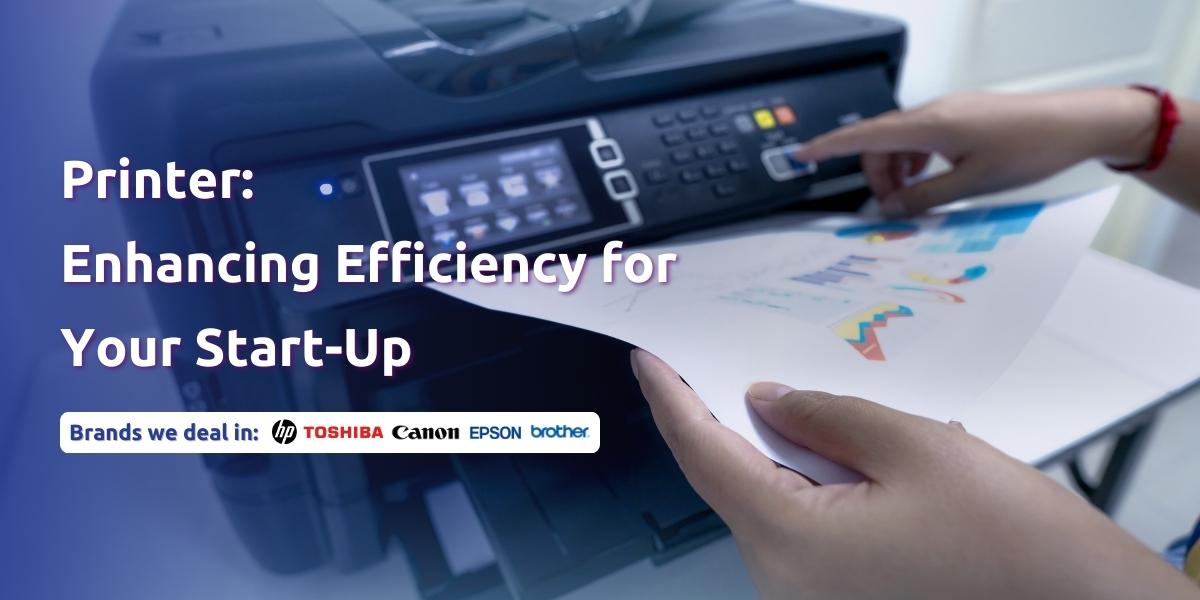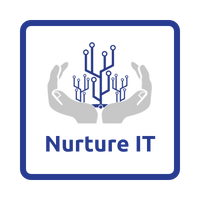
Introduction:
A printer is an essential device that allows you to transform digital content into physical copies on paper. Whether it’s documents, images, or other materials, a printer helps you bring your digital files to life in a tangible format. Printers are widely used in both personal and professional settings to meet various printing needs.
Why Does Your Start-Up Need a Printer?
Having your own printer offers numerous advantages for your start-up or small business. Relying on outside printing services can be costly and time-consuming, especially when you require frequent or urgent printing tasks. By having a printer in-house, you gain greater control and efficiency over your printing needs. You can quickly print important documents, marketing materials, reports, invoices, and more, without relying on external sources. It saves you time, money, and provides convenience for day-to-day operations.
Confidentiality: With an in-house printer, you can maintain the confidentiality of sensitive documents. Printing confidential information externally increases the risk of unauthorized access or data breaches. By keeping your printing tasks within your organization, you can ensure that sensitive information remains secure and protected, promoting peace of mind for your business and your clients.

Different Types of Printers
There is a wide range of printer types available to cater to different requirements. Here are some commonly used printers:
- Inkjet Printers: These printers recreate digital images by spraying ink onto paper. They are the most common type of personal printers and find wide use in home offices, student projects.
- Ink Tank Printers: Ink tank printers have become increasingly important due to their cost-effective and efficient printing capabilities. These printers feature large, refillable ink tanks instead of cartridges, allowing for longer periods of uninterrupted printing and reducing costs. They offer high-quality prints, vibrant colors, and sharp details, making them suitable for various applications. Additionally, refilling the ink tanks is easy and affordable, contributing to a sustainable printing solution. Ink tank printers have revolutionized the printing landscape by providing an affordable and reliable solution for high-volume printing without compromising on quality.
- Laser Printers: Laser printers use a laser beam to produce high-quality prints by defining an image on a negatively charged drum. They are often found in professional settings, such as offices, businesses, and academic institutions, where fast and precise printing is required. Color laser printers are also available for producing vibrant and professional color prints.
- 3D Printers: 3D printing is a relatively new technology that creates physical objects from digital files. It builds objects layer by layer using various materials. This technology finds applications in numerous fields, including manufacturing, prototyping, architecture, healthcare, and education. With 3D printers, intricate designs and complex geometries can be brought to life by using a wide range of materials such as plastics, metals, ceramics, and even biological materials.
- Thermal Printers: Thermal printers produce images by passing thermochromic-coated paper over a print head with electrically heated elements. They are commonly used in point-of-sale systems, retail stores, and restaurants for printing receipts and labels. Dye-sublimation printers, a type of thermal printer, are used for transferring dye onto materials, making them suitable for producing high-quality photographs and graphics.
- All-in-One Printers: These printers combine printing with other functionalities such as copying, scanning, and faxing. They provide versatility and convenience in a single device, making them ideal for small offices, home offices, and personal use where space and budget are considerations.
- LED Printers: LED printers are similar to laser printers but use a light-emitting diode array in the print head instead of a laser. They offer fast and accurate printing and are often used in professional environments, such as graphic design studios and advertising agencies.
- Photo Printers: Designed specifically for printing high-quality photos, these printers ensure excellent image reproduction using specialized inks and papers. They are commonly used by photographers, artists, and individuals who want to print their digital photos with exceptional clarity and color accuracy.
- Older Printer Types: Dot matrix printers and line printers are older technologies that are now outdated and rarely used. Dot matrix printers were once popular for their ability to create carbon copies, while line printers were used for high-volume printing in mainframe computer environments. However, advancements in technology have made them less relevant in today’s printing landscape.
Features to Look for in a Printer :
When choosing a printer, consider the following features that are of utmost importance to users:
- Color: Most modern printers offer color printing, but they can also be set to black and white. Color printers require multiple ink cartridges or toners, which can increase operating costs.
- Resolution: Printer resolution determines the sharpness of text and images and is measured in dots per inch (dpi). Most printers offer sufficient resolution for everyday needs at 600 dpi.
- Speed: Printing speed is crucial for users who require large print volumes. Faster printing speeds can be achieved with more sophisticated and expensive printers.
- Memory: Printers come with a certain amount of memory, typically ranging from 2 to 16 megabytes. Additional memory can be beneficial when printing pages with large images or complex documents.
- Connectivity: In addition to the mentioned features, consider the connectivity options offered by the printer. Look for printers that support LAN (Local Area Network) or Wi-Fi connectivity, allowing seamless integration into your network infrastructure. Network printer capabilities enable easy sharing and access from multiple devices, enhancing collaboration and productivity within a business environment.

Deskjet or Inktank or Laser – How to choose the right printer ?
| Printer Type | Entry Cost | Continuous Usage | Replacement Frequency | Print Quality | Durability | Additional Features |
|---|---|---|---|---|---|---|
| Inkjet | Low (as low as ₹5,000) | Needs to be used frequently; else cartridge dries up | High (depends on usage volume) | Can print documents and high-resolution photos | Meant for personal or few users | Print, scan, copy |
| Ink Tank | Mid-range (starts at ₹10,000) | Can be left unused for longer periods | Lower (higher ink capacity, refillable) | Can print documents and high-resolution photos | Suitable for small offices or workgroups | Dual-side printing, ADF, etc. |
| Laserjet | Higher (AIO starts above ₹15,000) | Can be left unused for long periods | Low (thousands of pages per toner) | Mainly for documents; color laser may not provide high photo quality prints | Models available for high loads | Multi-copy printing, stapling, binding, etc. |
Commercial Printers :
Just like commercial laptops offer superior performance and features tailored to business needs, commercial printers are designed to excel in the corporate environment. Commercial printers surpass their consumer counterparts in several ways, making them the preferred choice for businesses. Firstly, they offer enhanced durability and robustness to withstand the demands of high-volume printing. Commercial printers are built to handle large workloads consistently, ensuring uninterrupted productivity. Additionally, they incorporate advanced features such as fast double-sided printing, high-speed copying, and efficient paper handling, allowing for quick and efficient document processing.
In summary, commercial printers are designed with the specific needs of businesses in mind. Their durability, performance, advanced features, superior print quality, and cost-effectiveness make them the ideal choice for companies looking to optimize their printing operations. With a commercial printer, businesses can enhance productivity, streamline workflows, and achieve professional results, all while maintaining control and reducing costs.
Why Should Businesses Use Commercial Printers?
From multiple documents to large format items, commercial printers offer a wide range of capabilities. Experience the convenience of on-demand printing, including double-sided printing, professional business stationery, and more. With quality printer toner inks, your prints will impress. Discover the advantages of bringing printing in-house with commercial printers. Save costs while maintaining high-quality printing, and enjoy the flexibility to produce various items according to your company’s requirements.
Benefits of a Commercial Printer
- Cost-effectiveness: Save money by eliminating outsourcing expenses.
- Quality: Achieve impressive print results with high-quality commercial printers.
- Time efficiency: Print what you need, when you need it, without delays.
- Control: Have complete control over the entire printing process, from design to output.
- Reliability: Rely on commercial printers designed for consistent performance, often with guarantees.
What is Network Printer and how can it help your business?
A network printer is a printer that is connected to a network, allowing multiple users to access and print documents from a centralized location. It functions by connecting the printer to a local area network (LAN) or a wireless network, enabling seamless printing capabilities across the organization. This technology offers several advantages for businesses:
- Efficient Printing: Network printers eliminate the need for individual printers at each workstation, streamlining the printing process and reducing clutter. Employees can easily send print jobs to a centralized printer, saving time and improving productivity.
- Cost Savings: Consolidating printing resources with a network printer can lead to cost savings. Businesses can minimize expenses associated with purchasing and maintaining multiple printers, as well as managing separate ink or toner supplies.
- Enhanced Collaboration: With a network printer, employees can share a single printing device, fostering collaboration and teamwork. It promotes a centralized document management system, allowing easy access to printed materials for all team members.
- Centralized Management: Network printers provide centralized management capabilities, allowing IT administrators to monitor and control printing activities. This enables efficient management of print queues, user access, and printer settings, resulting in better control and optimization of printing resources.
- Improved Security: Network printers offer enhanced security features to protect sensitive information. User authentication and data encryption help safeguard confidential documents, reducing the risk of unauthorized access or data breaches.
In summary, network printers simplify the printing process, enhance collaboration, reduce costs, and provide efficient management and security. By adopting network printing solutions, businesses can streamline their printing operations, optimize resources, and improve overall efficiency in document management.
So what type of printer should you get for your Business ?
Confused about choosing the right printer for your Startup or SMB? Reach out to us for expert guidance and find the perfect printing solution. Let us help you enhance your business efficiency and control.
Get in Touch
Nurture IT
50, 9th A Main Rd, Indira Nagar 1st Stage, Stage 1, Indiranagar, Bengaluru,
Karnataka 560038
Phone +91 9886349622
pracilla@nurtureit.in
